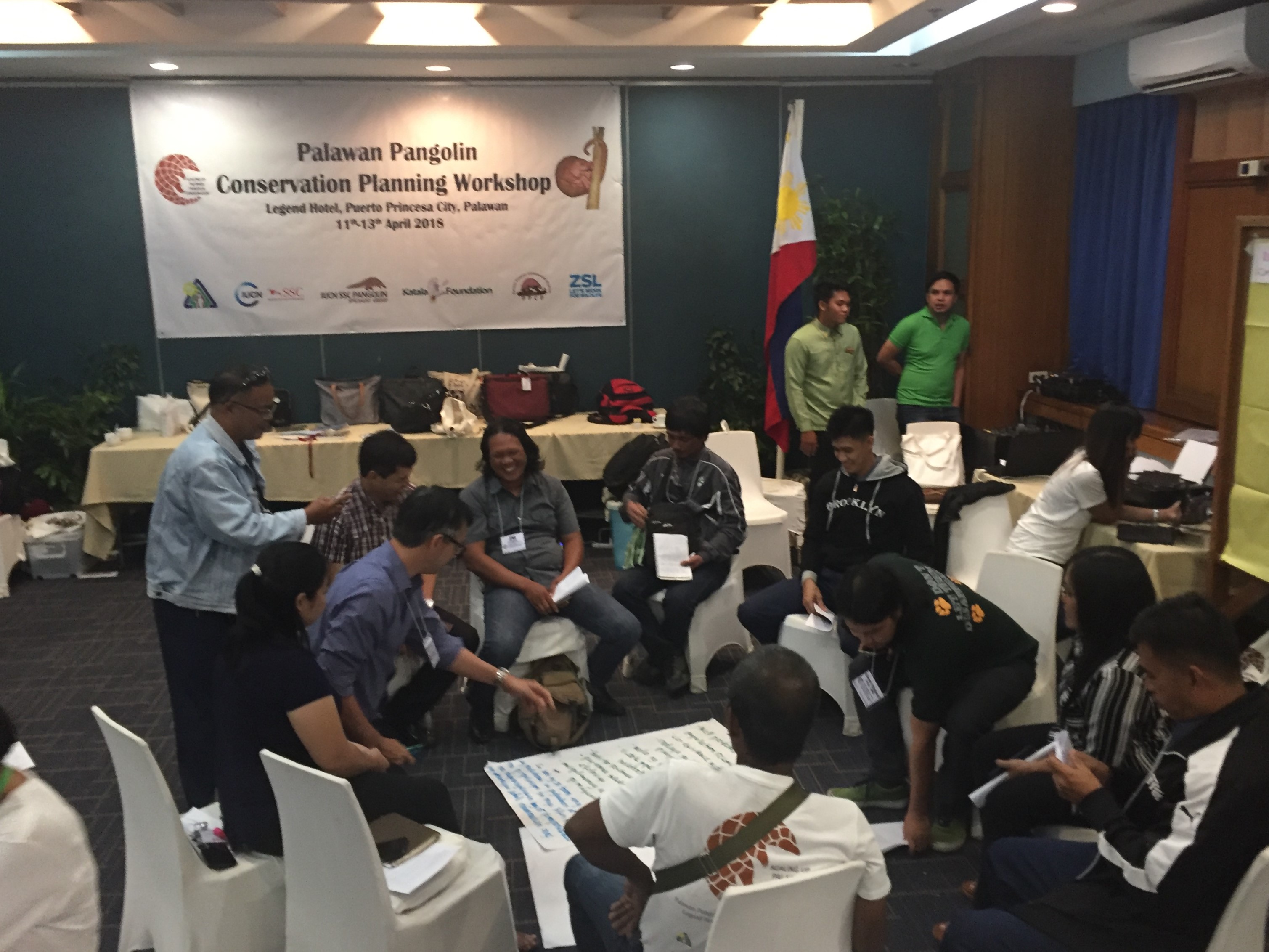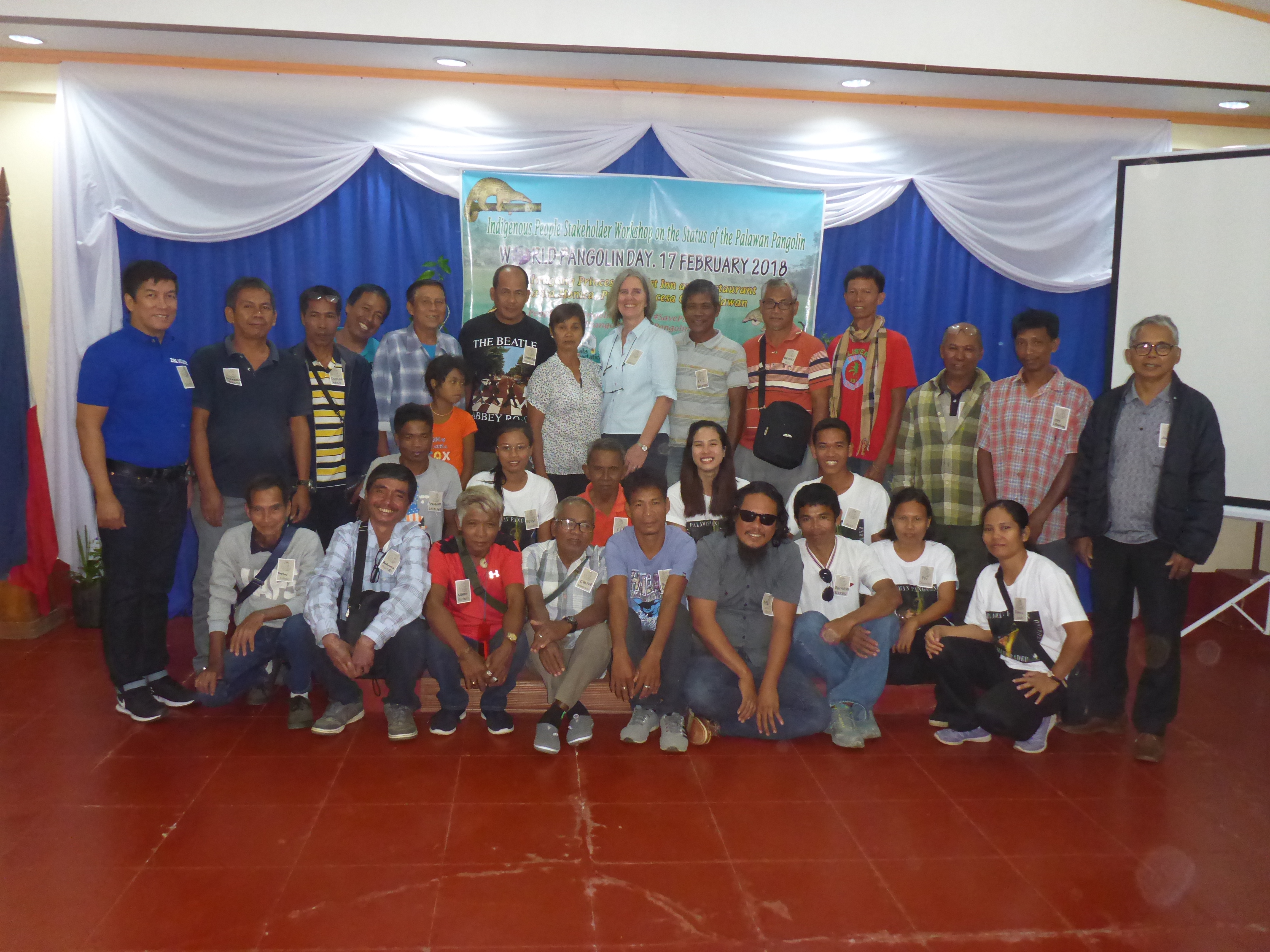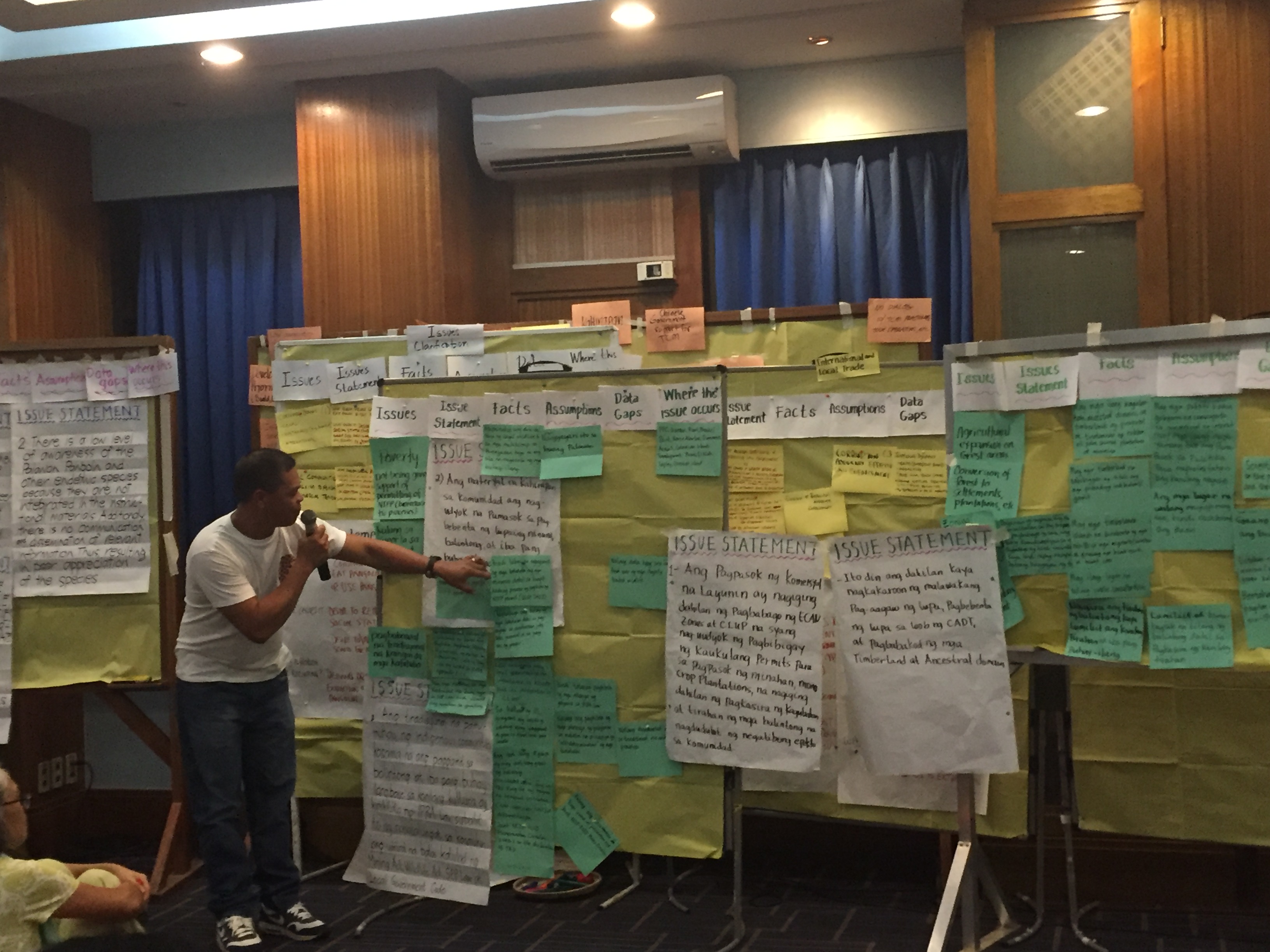This month the Palawan Council for Sustainable Development Staff (PCSDS), Katala Foundation Incorporated (KFI), Zoological Society of London (ZSL) Philippines, and the IUCN SSC Pangolin Specialist Group held a workshop to develop the first ever national conservation strategy for the Palawan pangolin. This is a critical first step for the endemic species, populations of which are declining rapidly.
The Palawan pangolin (Manis culionensis), also known as the Philippine pangolin, has the most restricted range of any pangolin species, being found only on Palawan and the Calamian Islands in the Philippines. Previously thought to be synonymous with the Sunda pangolin, this species has received very limited research and conservation attention, and little is known about its biology, ecology, or populations in quantitative terms. However, available evidence suggests that it is highly threatened, and the species is now rarely seen within its range.
From the 11th-13th April, the PCSDS, KFI, ZSL Philippines and the Pangolin SG, partially funded by The Mohamed bin Zayed Species Conservation Fund, held a workshop in Puerto Princesa city to facilitate the development of the first ever conservation strategy for this species. Participants comprised key stakeholders, including representatives from government, Indigenous Peoples groups, key law enforcement agencies, academics, practitioners, and local NGOs. Following IUCN SSC Species Conservation Planning Guidelines, the workshop involved participants coming together to create a vision for the Palawan pangolin, as well as establishing the principal issues facing the species, and ambitious goals, objectives and actions necessary to conserve the species over the next 25 years. Collaboration between participants was fundamental to this process, and should ensure commitment from key stakeholders in implementing the conservation strategy developed.

Groups of participants joined to collectively form a vision statement for the Palawan pangolin over the next 25 years.
The principal issues negatively affecting the Palawan pangolin, as identified by participants, included illegal trade, lack of knowledge of the species and its ecology and biology, habitat loss, and circumstances surrounding Indigenous Peoples and their access to natural resources. Following a process of issues analysis and objective prioritization, a suite of key actions were agreed and will be outlined in the final strategy. They include improved law enforcement to prevent poaching and trafficking of pangolins, empowering indigenous peoples and local communities to increase stewardship and protection efforts, and the prevention of habitat loss and degradation caused by poor land use planning. An additional key objective comprised increasing research efforts in order to increase knowledge of this species and its conservation needs.
Throughout the process it was crucial to have input from key stakeholders. The involvement of representatives from Indigenous Peoples communities in particular was crucial to recognize community related issues, and to identify viable solutions in terms of objectives and actions. Contributing to this process was a stakeholder workshop that was held in February, organized by KFI and jointly conducted by KFI and ZSL Philippines, with funding support from Wildlife Reserves Singapore. This workshop provided a forum for discussion on the Palawan pangolin by Indigenous Peoples and local communities, and highlighted the valuable knowledge that they can contribute to improve understanding of pangolins, their distribution and population levels, threats, and traditional uses and values.

Group picture from the stakeholder workshop held on World Pangolin Day 2018 © Sabine Schoppe

Representative from Indigenous People community presents results from the community related issues working group.
The workshop held on World Pangolin Day fed directly in to the event this month, and the Palawan pangolin conservation strategy development workshop was productive and collaborative, and the enthusiasm of the participants provides reason to be optimistic about the future of the Palawan pangolin. ZSL Philippines Country Manager, Godofredo Villapando, said: “All stakeholders across the Philippines needed to ensure the future survival of the Palawan pangolin have come together to create this strategy. That in itself is unprecedented and provides great cause for optimism.”
The outcome is a collaborative conservation strategy, with buy-in from all stakeholders, which will be published towards the end of the year. This is a critical first step for the conservation of the Palawan pangolin. However, the hard work has only just begun – the critical next step is ensuring there is effective implementation of the strategy. PCSDS, together with local government units, have a vital role to play in ensuring the successful implementation of the conservation strategy, which is needed to achieve the vision of thriving Palawan pangolin populations in the next 25 years.

Participants celebrating the end of the workshop!



